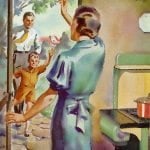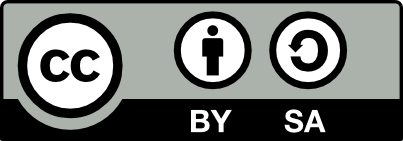By Kat Cain (Manager, Digital Literacy Programs) and Craig Patterson (Manager, Faculty of Arts and Education Library Services, Learning and Teaching) – Deakin University.
It’s a shared experience in public, specialist and academic libraries – regularly hearing our community members amazed reflection, “I didn’t know the library did that”, when we provide learning services beyond that of collections. The fuzzy notion of the library as mostly just books and borrowing can even be a common idea that many librarians have before they start their degree and get into the field, and the breadth and depth of Library work then becomes evident. But how to get this message of Libraries as a teaching and learning service out to our communities?
Public libraries have experimented with different comms and different ways to share their offerings with their communities. The “Unusual Library Things” infographic, that visualised resources or services available in libraries across the world, was a great way of articulating libraries’ role in community building and lifelong learning. To launch their Inspiration Lab with its fabulous digital equipment and opportunities to build technical skills, Vancouver Public Library (Canada) strategised their communications as stories and creation. Their experimentation with live-tweeting and live streaming, bus shelter advertisements, digital signage, and beautifully designed physical advertising material was effective and award winning. Closer to home, New Zealand’s Invercargill City Libraries joyously engages with their communities through creative social media approaches that shine a very big light on their lifelong learning model. Do you remember their Kardashians riff of “Keeping up with the Librarians”? While Yarra Plenty Regional Libraries, took a personalised and incredibly effective path to reaching out to their senior community and connecting them to services and resources they needed. They got on the phone and called them. The communication impact of this approach was pretty clear – being interviewed by Leigh Sales, a these “legends are Librarians at Yarra Plenty Library” shout out by the Victorian Premier, and a jump in public awareness about how diverse and responsive to community our public libraries are. These are just a few examples of fabulous ways libraries can build awareness of their learning services.
Academic librarian roles increasingly include teaching responsibilities
Academic libraries are often considered the heart of the university, central to the learning, teaching and research endeavours. Although we have strong service delivery and facilities management, modern academic libraries also prioritise pedagogical offerings and outcomes. In fact, academic libraries have moved beyond tentative concepts of contributing to student learning or as supporting learning. As Corrall and Jolly (2020) make clear, libraries and librarians have a major role to play in learning and teaching. Pedagogical principles underpin academic library services and engagement. Our information and digital literacy focused learning materials are amazing; and our librarians are wonderful teachers. What we haven’t done as successfully is make clear that librarians have an active, informed role in teaching and learning. We have a tendency to focus on the services, our collections, the spaces and equipment we provide. We are less adventurous in marketing librarians as teachers and libraries as learning hubs. Perhaps this emerges as an unconscious reflection of the contested and questioned role of librarians as teachers (Wheeler & McKinney, 2015)?
People can debate whether librarians are teachers or not, but what we do know is that that people want to learn when they come to the library. And if people want to learn, everyone wins if that learning is well-designed.
As a learning and teaching focused team for Deakin Library, we have grappled with how to articulate and contextualise what we do. We found that teaching staff were often surprised that we run sessions on digital identity or offer digital literacy curricula mapping. Some of our library’s best teaching approaches and outcomes were also our best-kept secrets and we wanted to get the word out.
But how to do this? We spent time as a team discussing what we do and how we frame it.
Deakin Librarians work to develop the digital fluency and knowledges of our community, both staff and students. We do this through good learning design, which is not in most people’s conception of what it means to be a librarian, or what libraries offer. But it does make sense: if libraries exist to build communities and facilitate lifelong learning, there are knowledges and skills people in communities can develop to meet their goals. That’s where we come in.
We then needed to consider how we could shape a teaching identity for Deakin Library. That’s why we developed a ‘Working with teaching staff’ webpage rounding up our most impactful ways to partner with academics at Deakin. We knew that academics were unlikely to serendipitously find and explore this pitch page. Instead, we aimed for Liaisons to use this resource in their conversations and communications with academics, with explicit language around learning design and teaching capacities. To further support this self-framing, our team concurrently redesigned a whole suite of web resources focused on teaching needs. Again, rather than relying on our community stumbling across the messaging and learning materials, we proactively promoted it through both our Deakin Library blog (Article) and the broader university blog (Network).

Like all communications, there is room for improvement and changes. Continued conversations and putting new ideas on the board is needed. However, the value of consciously promoting our Librarians as teachers and continuing to self-frame as active in learning experiences is immeasurable.
We leave you with two questions – how do you frame yourself as a teacher and how do you communicate that identity? And we challenge you to put your teacher statement into the discussion space below.
References:
Corrall, S., & Jolly, L. (2019). Innovations in learning and teaching in academic libraries: Alignment, collaboration, and the social turn.
Wheeler, E., & McKinney, P. (2015). Are librarians teachers? Investigating academic librarians’ perceptions of their own teaching skills. Journal of Information Literacy, 9(2), 111–128.











